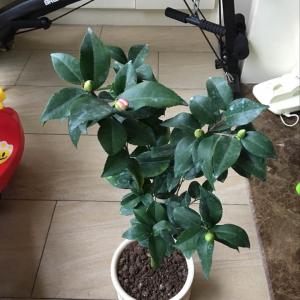
1. Enhanced Mental Well-being
Positive thinking has a profound impact on mental well-being. It helps reduce stress, anxiety, and depression by shifting our focus towards positive experiences and solutions rather than dwelling on negativity. Adopting a positive mindset can improve our resilience, increase self-confidence, and foster a greater sense of inner peace and contentment.2. Improved Physical Health
The mind and body are deeply interconnected, and positive thinking can have a positive influence on our physical health. Research suggests that positive thinkers tend to have lower rates of cardiovascular disease, better immune function, and faster recovery from illness or surgery. A positive mindset promotes healthy lifestyle choices, such as regular exercise, balanced nutrition, and better sleep patterns, which contribute to overall physical well-being.3. Increased Resilience
Positive thinking enhances our ability to bounce back from setbacks and overcome challenges. By focusing on possibilities, finding lessons in failures, and maintaining an optimistic outlook, we develop resilience and the belief that we can overcome obstacles. This resilience allows us to persist in the face of adversity and view setbacks as temporary rather than permanent.4. Enhanced Relationships
Positive thinking has a profound impact on our relationships with others. A positive mindset fosters kindness, empathy, and compassion, leading to more harmonious and fulfilling connections. It also attracts positive people into our lives and helps build strong support networks. When we approach relationships with positivity, we enhance communication, resolve conflicts more effectively, and create a nurturing and uplifting environment.5. Increased Productivity and Success
Positive thinking fuels motivation, productivity, and success. When we believe in our abilities, maintain a positive outlook, and embrace a can-do attitude, we approach challenges with enthusiasm and determination. This positive mindset enhances creativity, problem-solving skills, and the ability to seize opportunities. It also attracts positive opportunities and opens doors for personal and professional growth.6. Cultivating a Positive Mindset
While embracing positive thinking may require practice and effort, it is an attainable mindset that anyone can cultivate. Here are some practical tips to foster a positive mindset: - Practice gratitude: Regularly express appreciation for the blessings and positive aspects of your life. - Challenge negative thoughts: Replace negative thoughts with positive affirmations and focus on solutions rather than problems. - Surround yourself with positivity: Surround yourself with positive people, inspiring books, uplifting music, and motivating quotes. - Practice self-care: Take care of your physical and emotional well-being through activities like exercise, relaxation techniques, and self-reflection. - Engage in positive self-talk: Replace self-criticism with self-encouragement and affirmations of your abilities and worth. - Set realistic goals: Set achievable goals that align with your passions and values, and celebrate your progress along the way.Conclusion
The power of positive thinking lies in its ability to transform our mindset, emotions, and overall well-being. By cultivating a positive outlook, we can enhance our mental and physical health, increase resilience, improve relationships, and unlock our full potential for success. Embrace the power of positive thinking and watch as it propels you towards a happier, more fulfilling life.
1. Establish Realistic Goals
Set achievable and realistic weight loss goals. Aim for a steady and gradual weight loss of 1-2 pounds per week. Focusing on sustainable changes rather than quick fixes will contribute to long-term success.2. Adopt a Balanced and Nutritious Diet
Focus on consuming a balanced diet that is rich in whole foods. Include plenty of fruits, vegetables, lean proteins, whole grains, and healthy fats. Limit your intake of processed foods, sugary snacks, and beverages. Be mindful of portion sizes and listen to your body's hunger and fullness cues.3. Stay Hydrated
Drink an adequate amount of water throughout the day. Staying hydrated not only supports overall health but also helps control appetite and prevent overeating. Opt for water as your primary beverage and limit the consumption of sugary drinks.4. Practice Mindful Eating
Be mindful of your eating habits and pay attention to your body's signals. Slow down while eating, savor each bite, and listen to your body's cues of hunger and fullness. Avoid distractions like TV or screens while eating to stay present and make conscious food choices.5. Engage in Regular Physical Activity
Incorporate regular physical activity into your routine. Find activities that you enjoy, such as walking, jogging, swimming, cycling, or dancing. Aim for at least 150 minutes of moderate-intensity aerobic exercise per week, along with strength training exercises to build muscle and boost metabolism.6. Prioritize Quality Sleep
Get enough restful sleep each night. Lack of sleep can disrupt hormonal balance, leading to increased appetite and cravings. Aim for 7-9 hours of quality sleep to support weight loss efforts and overall well-being.7. Manage Stress Levels
Find healthy ways to manage stress, as it can contribute to emotional eating and hinder weight loss progress. Engage in relaxation techniques such as meditation, deep breathing exercises, or yoga. Find activities that bring you joy and help you unwind.8. Seek Support and Accountability
Consider joining a support group, seeking the guidance of a registered dietitian, or partnering up with a workout buddy. Having support and accountability can greatly enhance your motivation and adherence to healthy habits.9. Be Patient and Kind to Yourself
Remember that sustainable weight loss takes time and effort. Be patient with yourself and celebrate small victories along the way. Focus on progress rather than perfection and practice self-compassion throughout your journey.Conclusion
Losing weight naturally is a gradual process that involves adopting healthy habits, nourishing your body with wholesome foods, staying physically active, managing stress, and taking care of your overall well-being. By following these tips and committing to a sustainable lifestyle, you can achieve your weight loss goals while promoting long-term health and vitality.
1. Define Your Blog's Purpose and Target Audience
Before diving into the world of blogging, it's essential to determine the purpose of your blog and identify your target audience. Decide what topics, themes, or niche you want to focus on. Consider your passions, expertise, and the audience you want to engage with. Having a clear vision of your blog's purpose and target audience will guide your content creation and help you build a loyal readership.2. Choose the Right Blogging Platform
Selecting the right blogging platform is crucial for your blog's success. Consider platforms like WordPress, Blogger, or Squarespace, which offer user-friendly interfaces, customization options, and a range of features. Evaluate their functionalities, ease of use, and scalability to ensure they align with your blogging goals and technical expertise.3. Decide on a Memorable Domain Name
Choosing a memorable and relevant domain name is vital for your blog's branding and online presence. Opt for a domain name that reflects your blog's topic or niche while being easy to remember and spell. Ensure it's unique, available, and aligns with your blog's identity.4. Create High-Quality, Engaging Content
Content is the heart of any successful blog. Develop a content strategy that focuses on providing value to your target audience. Plan and create high-quality, engaging content that is informative, entertaining, or solves a problem. Consistency is key, so establish a publishing schedule and stick to it to keep your readers engaged and coming back for more.5. Implement Effective SEO Practices
Search Engine Optimization (SEO) is crucial for driving organic traffic to your blog. Research and incorporate relevant keywords throughout your content, optimize your blog's metadata, and focus on creating quality backlinks. By understanding and implementing effective SEO practices, you can improve your blog's visibility in search engine results and attract more readers.6. Engage with Your Audience
Building a successful blog goes beyond publishing content. Engage with your audience by responding to comments, encouraging discussion, and fostering a sense of community. Take the time to understand your readers' needs and preferences, and tailor your content to address them. Actively participate in social media platforms related to your blog's niche to expand your reach and connect with a broader audience.7. Monetize Your Blog
If your goal is to generate income from your blog, explore various monetization options. These can include display advertising, sponsored content, affiliate marketing, selling digital products or services, or offering premium memberships. Research and implement monetization strategies that align with your blog's niche and audience while providing value to your readers.Conclusion
Starting a successful blog requires careful planning, consistent effort, and a deep understanding of your target audience. By defining your blog's purpose, selecting the right platform, creating high-quality content, implementing effective SEO practices, engaging with your audience, and exploring monetization options, you can set yourself on the path to blogging success. Remember, building a successful blog takes time, so stay dedicated, adapt to changes, and enjoy the journey.
Introduction
Living a balanced life is the key to achieving a sense of well-being and happiness. It's about finding harmony among the different aspects of your life, such as work, relationships, and health. This article will explore the concept of healthy living habits for a balanced life, providing practical tips and insights to help you lead a more fulfilling and vibrant life.
The Essence of Healthy Living Habits
Healthy living habits are behaviors and routines that contribute to improved physical and mental health. These habits can range from maintaining a balanced diet and regular exercise to ensuring adequate sleep and managing stress effectively. The ultimate goal of these habits is to achieve a balanced life, where different aspects of life are in harmony, leading to a sense of fulfillment and well-being.
Key Healthy Living Habits for a Balanced Life
1. Balanced Diet
A balanced diet is a cornerstone of healthy living. It involves consuming a variety of foods in the right proportions to achieve and maintain optimal health and weight. A balanced diet includes plenty of fruits and vegetables, lean proteins, whole grains, and healthy fats. It also involves limiting the intake of processed foods, sugary drinks, and high-sodium foods.
2. Regular Exercise
Regular physical activity is another essential healthy living habit. Exercise not only helps control weight but also reduces the risk of various health conditions, including heart disease, diabetes, and certain types of cancer. Moreover, it improves mood, boosts energy levels, and promotes better sleep.
3. Adequate Sleep
Getting enough quality sleep is crucial for overall health and well-being. Sleep plays a vital role in physical health, mental health, productivity, emotional balance, and even your weight. Experts recommend adults aim for 7 to 9 hours of sleep per night.
4. Stress Management
Effective stress management is a vital part of living a balanced life. Chronic stress can lead to serious health problems, such as heart disease, depression, and an impaired immune system. Techniques for managing stress include meditation, deep breathing exercises, yoga, and other relaxation techniques.
Conclusion
Living a balanced life is all about making consistent, healthy choices in all areas of life. By adopting healthy living habits, you can improve your physical and mental health, enhance your quality of life, and achieve a sense of balance and fulfillment. Remember, it's not about perfection but about making small changes that lead to big benefits over time.

1. Warm Lighting
Opt for warm and soft lighting to create a cozy ambiance. Swap out bright, harsh lights with warm-toned bulbs or use table and floor lamps with soft shades. Adding candles or string lights can also contribute to a warm and inviting atmosphere.2. Soft Textures
Incorporate soft and tactile textures to make your space feel cozy. Add plush rugs, fluffy pillows, and warm blankets to your seating areas. Consider using velvet or faux fur fabrics for an extra touch of coziness. These soft textures will create a comfortable and inviting environment.3. Natural Elements
Bringing in elements from nature can add warmth and coziness to your living space. Decorate with indoor plants, dried flowers, or small potted herbs. Incorporate natural materials like wood, rattan, or wicker in your furniture and accessories. These natural elements provide a soothing and grounding presence in your home.4. Warm Colors
Choose warm and earthy color tones for your walls, furniture, and decor. Shades like soft neutrals, warm browns, deep oranges, and soothing grays can create a cozy and inviting atmosphere. Play with different hues and find a color palette that evokes a sense of comfort for you.5. Cozy Nook
Create a cozy nook where you can retreat and relax. Dedicate a corner with a comfortable chair or a snug window seat. Add soft cushions, a cozy blanket, and a side table for your favorite books or a warm cup of tea. This little sanctuary will provide you with a cozy space to unwind and enjoy some quiet time.6. Ambient Sounds
Consider incorporating ambient sounds to enhance the cozy atmosphere. Soft background music, nature sounds, or a crackling fireplace sound effect can add an extra layer of relaxation to your living space. You can use speakers, a sound machine, or mobile apps to create a soothing auditory experience.7. Personal Touches
Finally, infuse your living space with personal touches that reflect your personality and interests. Display cherished photos, artwork, or sentimental objects that bring you joy. Surround yourself with items that have meaning to you, creating a sense of familiarity and coziness.Conclusion
Transforming your living space into a cozy haven doesn't have to be complicated or expensive. By incorporating warm lighting, soft textures, natural elements, warm colors, creating a cozy nook, adding ambient sounds, and infusing personal touches, you can make your living space a warm and inviting retreat. Embrace the simple pleasures and take the time to create a cozy atmosphere that nurtures and restores you.
The Foundations of Mindful Living
At its core, mindful living is about cultivating a deep connection with ourselves, others, and the world around us. It involves nurturing qualities such as presence, compassion, gratitude, and acceptance. Here are some key elements of mindful living:1. Present-Moment Awareness
Mindful living begins with the practice of present-moment awareness. Instead of dwelling on the past or worrying about the future, we train ourselves to fully experience the present moment. This means paying attention to our sensations, thoughts, and emotions without judgment. By anchoring ourselves in the present, we can let go of regrets, fears, and distractions, and engage more fully with the richness of each moment.2. Cultivating Compassion
Mindful living also involves cultivating compassion, both towards ourselves and others. We learn to treat ourselves with kindness, understanding that we are human beings with flaws and limitations. We extend this compassion to others, recognizing their struggles and offering support and empathy. By embracing compassion, we foster deeper connections, strengthen relationships, and create a more harmonious and caring world.3. Gratitude and Appreciation
Practicing gratitude and appreciation is an integral part of mindful living. It involves recognizing and acknowledging the positive aspects of our lives, even in the midst of challenges. By focusing on gratitude, we shift our attention from what is lacking to what is abundant. This mindset shift cultivates a sense of contentment and joy, fostering a greater sense of well-being and fulfillment.The Benefits of Mindful Living
Mindful living offers numerous benefits that can positively impact our overall well-being and quality of life. Here are some of the key benefits:1. Stress Reduction
Mindfulness has been shown to reduce stress levels by helping us become more aware of our stress triggers and developing healthier responses. By practicing mindfulness, we can cultivate a greater sense of calmness and resilience, enabling us to navigate stressful situations with greater ease.2. Improved Mental Clarity and Focus
Regular mindfulness practice enhances our ability to focus our attention and improves mental clarity. It helps quiet the mind and reduces distractions, allowing us to be more present and engaged in whatever we are doing. This heightened focus enhances productivity, creativity, and decision-making.3. Enhanced Emotional Well-being
Mindfulness enables us to observe our thoughts and emotions without getting caught up in them. It allows us to respond to difficult emotions with greater wisdom and compassion. As a result, we experience increased emotional stability, resilience, and a greater capacity for joy and happiness.4. Better Physical Health
Research has shown that mindfulness practices can have positive effects on physical health. Regular mindfulness practice has been linked to reduced blood pressure, improved sleep quality, boosted immune function, and decreased symptoms of chronic pain and inflammation.Bringing Mindful Living into Your Life
Incorporating mindfulness into your daily life doesn't have to be complicated. Here are some simple practices to get started:1. Mindful Breathing
Take a few moments each day to focus on your breath. Notice the sensations of the inhale and exhale, and gently bring your attention back whenever it wanders. This practice helps anchor you in the present moment and cultivates a sense of calm.2. Mindful Eating
Instead of rushing through meals, take the time to savor each bite. Notice the flavors, textures, and smells. Eat slowly and with awareness, fully engaging your senses in the experience of eating.3. Mindful Movement
Engage in activities like yoga, tai chi, or walking with mindfulness. Pay attention to the sensations in your body, the movement of your limbs, and the surrounding environment. Allow yourself to be fully present in the physical experience.4. Mindful Communication
When engaging in conversations, practice active listening and being fully present with the person you're speaking to. Avoid distractions and judgments, and truly listen to understand rather than to respond.Conclusion
Mindful living is an art that can transform our lives in profound ways. By cultivating present-moment awareness, compassion, gratitude, and acceptance, we can navigate the challenges of the modern world with greater ease and authenticity. Embracing mindful living offers benefits for our mental, emotional, and physical well-being, enhancing our overall quality of life.
Introduction
As energy costs continue to rise and concerns about the environment grow, many homeowners are looking for ways to make their homes more energy-efficient. Energy-efficient homes not only help reduce energy bills, but they also help reduce carbon emissions and preserve natural resources. In this article, we'll explore some of the most effective energy-efficient home solutions and tips for saving money and the environment.Insulation
One of the most effective ways to make your home more energy-efficient is to add insulation. Insulation helps keep warm air inside during the winter and cool air inside during the summer, reducing the need for heating and air conditioning. There are several types of insulation available, including batt, blown-in, and spray foam insulation. Each type has its own advantages and disadvantages, so it's important to choose the right type for your home and budget.Windows
Replacing old, inefficient windows with new, energy-efficient ones is another effective way to reduce energy costs and improve home comfort. Energy-efficient windows are designed to prevent heat transfer, reducing the need for heating and air conditioning. Look for windows with a high energy-efficiency rating, such as those with the ENERGY STAR label. Additionally, consider adding window treatments, such as blinds or curtains, to further reduce heat transfer.Lighting
Switching to energy-efficient lighting is another effective way to save money and reduce energy use. LED (light-emitting diode) bulbs use up to 80% less energy than traditional incandescent bulbs and can last up to 25 times longer. LED bulbs are available in a variety of shapes and sizes, making them suitable for virtually any lighting application. Additionally, they emit less heat than traditional bulbs, reducing the need for air conditioning during the summer.Appliances
Old, inefficient appliances can use a lot of energy and contribute to high energy bills. When shopping for new appliances, look for those with the ENERGY STAR label, which indicates that they meet strict energy-efficiency guidelines. Additionally, consider upgrading to energy-efficient heating and cooling systems, such as heat pumps or geothermal systems. These systems use less energy than traditional heating and cooling systems, reducing energy costs and carbon emissions.Renewable Energy
Adding renewable energy sources to your home, such as solar panels or wind turbines, is another effective way to reduce energy costs and carbon emissions. While these systems can be expensive to install, they can pay for themselves over time in energy savings. Additionally, many states and municipalities offer incentives and rebates for homeowners who install renewable energy systems, making them more affordable.Conclusion
Making your home more energy-efficient is a smart investment that can save you money and help protect the environment. By adding insulation, replacing old windows, switching to energy-efficient lighting and appliances, and adding renewable energy sources, you can reduce energy costs and carbon emissions while improving home comfort. Remember, making your home more energy-efficient is a journey, and it may take time to implement all of these solutions. Start with the solutions that make the most sense for your home and budget, and work your way up from there. With patience and perseverance, you can create an energy-efficient home that is comfortable, affordable, and environmentally responsible.
Introduction
Whether you're a student, a professional, or simply someone who enjoys writing, improving your writing skills can help you communicate more effectively and achieve your goals. Writing is a skill that can be developed and honed over time, and there are many strategies you can use to improve your writing abilities. In this article, we'll explore some of the most effective techniques for improving your writing skills.Read Widely
Reading is one of the most effective ways to improve your writing skills. When you read widely, you expose yourself to different writing styles, techniques, and genres, which can help you develop your own writing voice and expand your vocabulary. Make a habit of reading every day, whether it's novels, non-fiction, newspapers, or online articles. Try to read a variety of different types of writing, and pay attention to how the writers structure their sentences and use language to convey meaning.Write Every Day
One of the best ways to improve your writing skills is to write every day. Set aside time each day to write, even if it's just for a few minutes. You can write in a journal, create a blog, or work on a short story or essay. Writing every day helps you develop your writing muscle and improve your ability to express yourself through words. It also allows you to experiment with different writing styles and techniques, and to develop your own unique writing voice.Learn Grammar and Punctuation
Good grammar and punctuation are essential for clear and effective writing. Learning the rules of grammar and punctuation can help you avoid common mistakes and improve your writing skills. There are many resources available for learning grammar and punctuation, including online courses, textbooks, and grammar guides. Take the time to study and practice the rules of grammar and punctuation, and make sure to proofread your writing carefully before submitting it.Practice Revision
Revision is an important part of the writing process. It allows you to refine and improve your writing, and to catch errors or areas that need improvement. Make a habit of revising your writing, whether it's a school paper, a work email, or a creative piece. Take the time to read through your writing carefully, and look for ways to improve sentence structure, clarity, and coherence.Get Feedback
Getting feedback on your writing can help you identify areas that need improvement and provide you with constructive criticism. You can ask a friend, family member, or colleague to read your writing and provide feedback, or you can join a writing group or workshop. When seeking feedback, be open to criticism and willing to make changes to improve your writing. Take the feedback as an opportunity to learn and grow as a writer.Conclusion
Improving your writing skills takes time and effort, but with practice and dedication, you can develop your writing abilities and become a more effective communicator. Reading widely, writing every day, learning grammar and punctuation, practicing revision, and seeking feedback are all effective strategies for improving your writing skills. Remember, writing is a skill that can be developed and honed over time. Don't be discouraged if your writing doesn't improve overnight. With patience and persistence, you can become a skilled and confident writer.
















